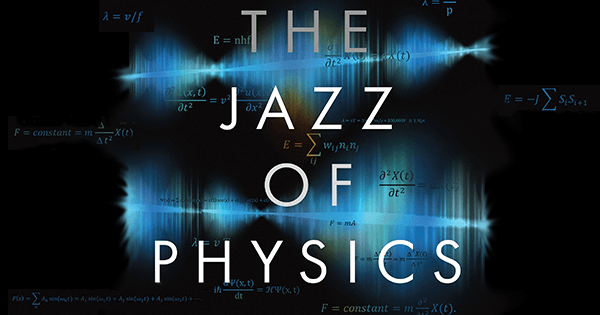The Jazz of Physics
Read an excerpt from Stephon Alexander’s book about the music of the universe

As Stephon Alexander writes in his new book, The Jazz of Physics, science and music have been bedfellows since Pythagoras conceived of the Western music scale, and Kepler wrote the score to the music of the spheres. That relationship has only grown more complex with the advent of modern astrophysics, with its vibrating strings and planes. Indeed, one of the fundamental equations of string theory (which attempts to make sense of the waves that comprise the universe) has a great deal in common with music, jazz in particular.
Alexander, a jazz musician and a theoretical physicist, has had his fair share of scientific eureka moments in the smoky enclaves of the jazz scene. Read an excerpt from his book about a musician who had his epiphanies while reading about physics: John Coltrane.
John Coltrane was known to practice so much that he would fall asleep with his mouthpiece in his mouth. This practice was guided and fueled by an unquenchable search for meaning in the cosmos. … He expanded the two-dimensional space of tone and time into a hyperspace that included sonic manipulations such as multiphonics—playing simultaneous overtones—and sheets of sound.
One of Coltrane’s biggest idols was Albert Einstein, and he embarked on a multidisciplinary investigation in a fervent search for connections among modern physics, cyclic time in Eastern philosophy, Western harmony, and African polyrhythms. Like Einstein, whose discoveries in physics were greatly influenced not only by physicists but by other disciplines, Coltrane realized that he had to go beyond the Western and classic jazz idiom to make his music cosmic and express the cosmic through music. Coltrane should serve as an inspiration especially for the scientist. I am going to make the case that through independent study, Coltrane acquired a main lesson from Einstein’s invariance principle and integrated it into his music. What we will see in Coltrane’s mandala is at the heart of the jazz of physics: a jazz musician employing the methodology of a theoretical physicist as a gedankenexperiment and strategic tool for improvisation.
Among Coltrane’s last three recorded albums were Stellar Regions, Interstellar Space, and Cosmic Sound. The inspiration for Interstellar Space was Coltrane’s study of Einstein’s theory of general relativity and the expanding universe hypothesis. He correctly realized that the expansion is a form of antigravity. In jazz combos, the gravitational pull comes from the bass and drums. The songs in Interstellar Space are a majestic display of Coltrane’s solos expanding away and freeing themselves from the gravitational pull of the rhythm section. Coltrane believed that the complexity of the cosmos flows into the actions of humans, and he practiced endless hours to be a conduit of this cosmic force. In his song “Jupiter,” one can hear Coltrane literally channeling the orbits of Jupiter’s moons in his improvisation.
Adapted excerpt from The Jazz of Physics: The Secret Link Between Music and the Structure of the Universe by Stephon Alexander. Copyright © 2016. Available from Basic Books, an imprint of Perseus Books, a division of PBG Publishing, LLC, a subsidiary of Hachette Book Group, Inc.

